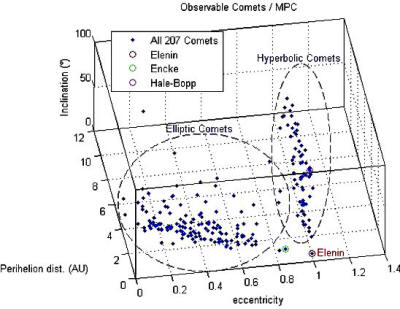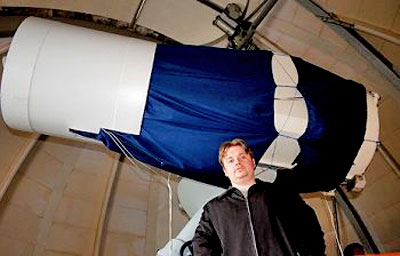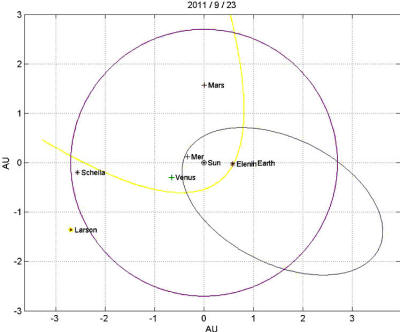|

by Laura Knight-Jadczyk
16 January 2011
from
Sott Website
One of the members of our research team is an astronomer at a large
observatory.
We've been having a number of exchanges about the
theories of
James McCanney. Unfortunately, I can't find any really
good videos of McCanney talking about his ideas. I did find the
following which are basically just audio with minimal graphics.
They do explain his ideas so have a
listen before you continue on.
Okay, now you know a bit about the possibilities of comets as parts
of the
Electric Solar System.
McCanney cites all the strange weather
on earth, strange behavior of the sun, that arrived in tandem with
Comet Hale-Bopp. So now along comes Comet Elenin. Let's start with
the likely trajectory.
On the image, which came from my astronomer
friend, it looks like this:

Elenin
E - Earth
W - Venus
M - Mars
The little black curved line represents Mercury.
Hopefully, it should be visible somewhere around mid-August. Its
closest approach to the Sun is scheduled in the first half of
September. Where it will go exactly - we do not know. Since its
orbit is close to the ecliptic plane, it should be visible low in
the sky. Orbital parameters are yet uncertain.
So far it looks
harmless:

SpeedN-NM Comet Elenin (C/2010 X1) appears as a tiny,
faint smudge
in this stack of four 240-second exposures taken on the morning of
December 10, 2010,
with a remote-controlled telescope in New Mexico.
(The quadrupled stars are due to the comet's motion between
exposures.)
It is called
Elenin since it was discovered by
Leonid Elenin.
I
expect the internet to soon be ringing with rumors and news bytes
about this comet. For now, there isn't much to say so I'm sharing
what I've received in private from an astronomer at a big
observatory that shall remain anonymous for the moment.
He says:
-
It is too early to accurately predict the future path - it's orbital
parameters haven't been revised.
-
Among the observable hyperbolic and parabolic comets (those that
come from the
Oort cloud) this one has the smallest perihelion
distance and the smallest inclination to the ecliptic plane.
-
Comet Elenin's orbit may be unstable as it may encounter some dark
bodies, for example, in the asteroid belt or even some
Taurid
objects. What would happen in those cases is a matter of luck.
-
This comet may carry a significant amount of material with it and if
it follows the currently projected orbit, the Earth may very well
pass through this material.
-
If Elenin is anything like what Victor Clube or James McCanney
describes, we might be in for some surprises - good or bad, who
knows?
For comparison a picture with some of the known comets:

comet comparison
For those interested:
Ephemerides of the comet C/2010 X1 Elenin.
Currently, according to Nasa, the predicted trajectory can be viewed
here.
Elenin's predicted brightness:

Where to look:

Interview with the discoverer:
Comets could pose a serious threat
- Кометы могут представлять серьезную угрозу (Google Translation)
("Comets may represent a serious danger")

Elenin's telescope

Comet Elenin Update!
I've received updates on Comet Elenin from the astronomical insider
who shall, as I said, remain anonymous for the moment.
The first item of note is that, with the update on the orbit of
Elenin, which was made on 09 Jan 11, that is 9-1-11 (interesting,
no?), it is scheduled to reach perihelion on the 9th of September,
that is: 9-9-11. Another interesting numerical combo.
A nice little animation of the calculated orbit:
An interesting alignment occurs right around the autumnal equinox
where we have Earth, Comet Elenin, the Sun and almost Mercury lined
up like ducks.
Now, have a look at this image:

I hope you can make out the yellow line of Elenin's orbit.
In the image, Astronomical Insider has
included the position of the asteroid belt as a big circle. He has
also noted the position of the member of that belt,
Schiela, which
is the asteroid that began to develop a comet-like coma back in
December. The blue ellipse is an approximation of the southern
Taurid meteor stream.
Something may change, of course, when the
comet crosses the asteroid belt in March/April.
|








